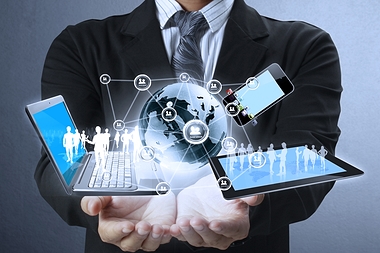How technology is changing your customers’ expectations

All you need to know about the technology shaping the future of your customers, and what that means for your business
Guest blogger professor Steven Van BelleghemOne of the inevitable consequences of rapidly developing technology is that customers’ expectation will also change as a result.
Today, a typical customer has come to expect delivery times and levels of service that they would never have imagined 10 years ago, and keeping up with these expectations is a challenge for all businesses.
When new players enter the market and do things a little quicker, slicker or smarter, consumers see what is really possible and become reluctant to accept anything less.
Recently, there has been a strong trend of companies making clever use of technology to strengthen their relationships with customers, and I believe there are four big technological revolutions that are going to affect these customer relationships in the coming years:
1. Technology is becoming invisible
Thinking back a few decades, technology was big, clunky and you needed to be quite tech savvy in order to work with it. I am often asked how society will be able to keep up with current technological developments, but actually, it is much easier now than it was 30 years ago. Those who can still remember an MS-DOS interface will know it was much more difficult to work with than today’s smartphones.
Technology is becoming invisible. Our lives are slowly becoming automated with sensors, cameras and data helping us every day. Even payments have become invisible – when you get out of your Uber car, you have paid for your ride without doing anything.
2. Technology makes the total experience better
In the next few years, we can expect technology to create a better service at all levels, and that will mean services that are more personalised and tailored to the individual.
Perhaps the most important development will be mixed reality. Companies used to focus purely on the offline customer experience, but digital technology caused a shift towards the online experience. Today and tomorrow there is a mixed reality environment, combining digital and human elements, and the rise of virtual and augmented reality could give a whole new dimension to this mixed reality approach.
3. Technology democratises markets
Technology becomes more and more accessible all the time.
We recently visited SAM Labs in London, a company aiming to make engineering skills accessible to anyone with a little creativity. They have developed very simple sensors, buttons and other great applications that can be connected with the simplest digital interface to allow anyone to discover what the Internet of Things is really about.
These modules are designed for education and for kids, and if kids work with technology from a very young age it will democratise the possibilities technology has to offer.
Tech Shop is another example.
Established in San Francisco, Tech Shop is a large room with all the equipment you need to make a product, with woodworking tools, 3D printers, laser cutters and more. For just $150 a month you get unlimited access to these devices – think of it like a gym, but with technical equipment and experts.
Many young entrepreneurs started to make their dreams come true at Tech Shop and the impact on society is huge. It is democratising entrepreneurship so just about anyone can get started with an idea, and the combined value of all the companies that emerged from Tech Shop is already more than $12billion.
4. Technology makes just about everything transparent
The popularity and use of block chains is increasing. A block chain is a technology that makes transactions fully transparent, so, if someone sells a diamond you can see where the diamond was made and who the previous owners were, increasing transparency.
Snapchat is probably the social platform that offers most transparency of what is going on with each of us. It does not share links or third-party content – you can only share what you have experienced yourself, so it is much more transparent than Facebook or Instagram.
Facebook Live is another example. With every person in the world now a potential camera crew capable of broadcasting live events, everything that is happening in the world becomes more transparent.
Not long ago we just shared a few photos or a short video after an event, but today's events are broadcast on Facebook. Companies can use this technology as tools to tell their own story in a way that is more transparent than ever, although they do make it more difficult to hide behind a facade.
These technological developments have a major impact on the relationship with your customer, and it is important to think about what is new and what is next if you are going to build a future-proof customer strategy.
Want to know more? Then view Professor Van Belleghem’s slideshow on the future of customer experiences: www.slideshare.net/stevenvanbelleghem
Professor Steven Van Belleghem is author of When Digital Becomes Human, published by Kogan Page, priced £19.99. Follow him on twitter @StevenVBe, subscribe to his videos at www.youtube.com/stevenvanbelleghem or visit www.stevenvanbelleghem.com

Press & Media Enquiries
For more information or to request interviews, contact CMI's Press Team on 020 7421 2705 or email press.office@managers.org.uk


